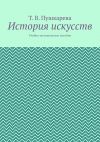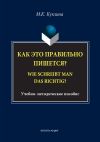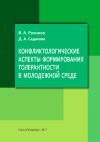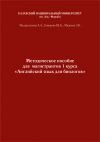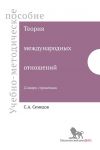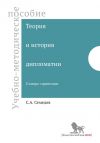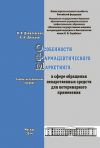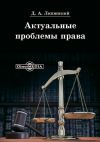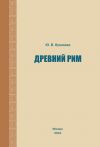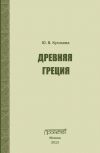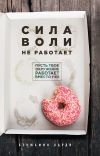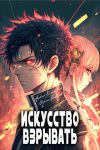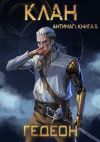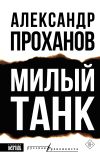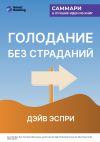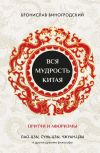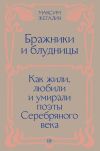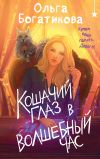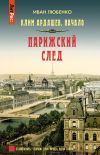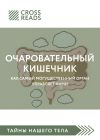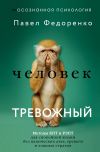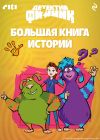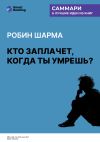Текст книги "Just Britain. Учебно-методическое пособие"

Автор книги: Надежда Суханова
Жанр: Иностранные языки, Наука и Образование
сообщить о неприемлемом содержимом
Текущая страница: 1 (всего у книги 4 страниц) [доступный отрывок для чтения: 1 страниц]
Н. А. Суханова
JUST BRITAIN
Учебно-методическое пособие

[битая ссылка] ebooks@prospekt.org
Introductory word
There is no need to explain how important it is today to know foreign languages. Communication has never been an easy thing, even between the people who have an enormous background of shared values and experience. Even if you are talking directly and clearly to them, they may not be hearing you. Misunderstanding is often caused by misinterpreting. Even if you know the words, and phrases, and grammar, and prepositions, sometimes “it does not ring the bell”. Without knowing the background, the people’s history and culture, their humor and their patterns of values, you will unlikely bring your idea to the opposite mind. Learn the roots, the nation’s mentality, way of life. The in-depth study of the nation of the language you study will contribute tremendously to your communication with people.
I. Incursion into ancient history
The history of Britain could be traced from the period between the departure of Romans and the establishment of the Saxon kingdoms. The proud Romans of the early centuries of our era habitually spoke of Britain as “on the edge of the habitable globe”, by which they meant outside the civilization of the Mediterranean world.
The peoples speaking a Celtic language were the earliest Britons of whom we have written records. Strictly speaking the term “Celtic” is a linguistic one, and refers to a branch of the Indo-European languages. There is no “Celtic race or group of tribes”, or any “Celtic area”. The Celtic languages have probably been spoken in the British Isles for more than three thousand years. Theу were brought by newcomers, perhaps already in the Bronze Age before 1000 B.C.
At the time of the Roman Conquest Britain herself was divided into a large number of independent Celtic kingdoms, each ruled by its own royal house. The Roman Conquest did not change the population or the Celtic tribal units, nor the language of the people as a whole. The history of Occupation and final withdrawal suggests that the Celtic way of life, the economy of the country, continued more or less unbroken apart from a sharp increase of civilization in the part of the country facing the Continent in the south-east. Here towns and villas, in which Latin was spoken to some extent, were added to our map. True architecture, monumental sculpture, fresco painting, mosaic work were new arts brought from Rome, and amenities such as plumbing with a steady water supply were introduced. The official religion was Roman, first the Roman pantheon, then Christianity. But the native Celtic religion lingered and was fused with Roman cults. To the last, Britain remained a remote province of the Roman empire, habitually referred to as “a country of the setting sun”, remote from our world.
The Romano-British fusion, which had been achieved through the long period when Britain formed part of the Roman Empire, and the continuity of British native life were the basis on which Britain now had to build up her independent existence from within, and to resist disintegration and conquest from without. Commercial towns, such as London, and the coloniae, originally Roman civic urban settlements of retired troops, undoubtedly had permanent executive body. These, what we may call “city states”, had become sufficiently Romanized to be able to carry on a form of organized civil life.
In the fifth and sixth centuries Britain became the centre of a large-scale maritime activity in which she herself took an important share. The Irish sea and the waterways to the north appear in our traditions as a busy intersection of sea-routes. The Celtic peoples were essentially habitual seafarers, with simple but fully adequate sea-going vessels. Under these conditions, a migration from south-western Britain into Armorica, the westernmost peninsula of Roman Gaul, established a British-speaking population overseas, the nucleus of modern Britanny, and the first colony. An interesting glimpse of the seafaring activities of the Celtic people of this period is a little Celtic settlement and the establishment of a Celtic Church and monastery in Galicia.
The intellectual life of the people is most clearly seen in their literature. The art of writing in the Latin alphabet had been introduced into Britain in Roman times, when the country became nominally Christian. Originally the literature of the Celtic peoples of Britain was oral. This ancient art of oral literature was guarded and cultivated by a highly privileged class in every court. We find mentioning about druids in Caesar’s works who were responsible for the education of the young nobility. The institution of druids, according to him, originated in Britain. In later times the reference to the druids are confined to Ireland, where they figure in the early sagas as possessed of supernatural powers, especially in prophecy. They hold a high position at the courts, in general one only residing in any court. In the early British courts it is believed that the bard’s most important function was that of custodian of the genealogies. In countries with no written laws, or charters, or wills, genealogies were the only guarantee of the right to a share in land, and of the right to inherit. Where there were no newspapers or leading articles, all political and personal propaganda was in the hands of the court poets. It is not surprising that traditions have come down to us of bards who have killed themselves on the death of their lord1.
TASKS
1. Find the following words and word combinations in the text and translate them into Russian. Think of possible explanations of the notions. Pay attention to prepositions.
– to be traced from the period
– on the edge of the globe
– strictly speaking
– to refer to a branch of
– amenities such as plumbing with a steady water supply
– religion lingered and was fused with
– to resist disintegration
– conquest from without
– Roman civic urban settlements
– permanent executive body
– a large-scale maritime activity
– a busy intersection of sea-routes
– the ancient art of oral literature
– the reference to the druids
– in the early sagas as possessed of supernatural powers, especially in prophecy
2. – Ask questions on the plot of the text and think over a plan for a story.
– Compose a story of your own, covering the contents of the text, adding your own details and characters involved in any historical episode.
– Compose a dialogue between a mass media anchorman and a researcher, studying the British history.
– Compose a summary of a historical event to make a report on a scientific conference.
– Make a story of your own describing a historical event of any time and any nation.
– Make suggestions about intellectual life of the ancient people of Britain.
II. Monarchy of the United Kingdom
The monarchy of the United Kingdom (commonly referred to as the British monarchy) is the constitutional monarchy of the United Kingdom and its overseas territories. The title of the monarch is king or queen. Queen Elizabeth II became monarch on 6 February 1952. The monarch and immediate family undertake various official, ceremonial, diplomatic, and representational duties. As the monarchy is constitutional, the monarch is limited to non-partisan functions such as bestowing honors and appointing the Prime Minister. The monarch is by tradition Commander-in-chief of the British Armed Forces. Though the ultimate formal executive authority over the government of the United Kingdom is still by and through the monarch’s royal prerogative, these powers may only be used according to laws enacted in Parliament, and, in practice, within the constraints of convention and precedent.
From 1603, when the Scottish King James VI inherited the English throne as James I, both kingdoms were rules by a single monarch. From 1649 to 1660 the tradition of monarchy was broken by the republican Commonwealth of England that followed the War of the Three Kingdoms. The Act of Settlement 1701, which is still in force, excluded Roman Catholics, or those who marry Catholics, from succession to the English throne. In 1707 the kingdoms of England and Scotland were merged to create the Kingdom of Great Britain and in 1801 the Kingdom of Ireland joined to create the United Kingdom of Great Britain and Ireland. The British monarch became nominal head of the vast British Empire, which covered a quarter of the world’s surface at its greatest extent in 1921.
In the 1920s, five-sixths of Ireland seceded from the Union as the Irish Free State, and the Balfour Declaration recognized the evolution of the dominions of the empire into separate, self-governing countries within a Commonwealth of Nations. After the Second World War, the vast majority of British colonies and territories became independent, effectively bringing the empire to an end.
George VI and his successor, Elizabeth II, adopted the tittle Head of the Commonwealth as a symbol of the free association of its independent member states.
The Commonwealth includes both republics and monarchies. The United Kingdom and fifteen other Commonwealth monarchies that share the same person as their monarch are called Commonwealth realms. The terms British monarchy and British monarch are frequently still employed in reference to the shared individual and institution; however, each country is sovereign and independent of the others, and the monarch has a different, specific, and official national title and style for each realm.
CONSTITUTIONAL ROLE
In the uncodified Constitution of the United Kingdom, the Monarch (otherwise referred to as the Sovereign or “His/Her Majesty”, abbreviated H.M.) is the Head of State. Oaths of allegiance are made to the Queen and her lawful successors. God Save the Queen (or God Save the King) is the British national anthem, and the monarch appears on postage stamps, coins and banknotes.
The Monarch takes little direct part in Government. The decisions to exercise sovereign powers are delegated from the Monarch, either by statute or by convention, to Ministers or officers of the Crown, or other public bodies, exclusive of the Monarch personally.
APPOINTMENT OF THE PRIME MINISTER
Whenever necessary, the Monarch is responsible for appointing a new Prime Minister (who by convention appoints and may dismiss every other Minister of the Crown, and thereby constitutes and controls the government). In accordance with unwritten constitutional conventions, the Sovereign must appoint an individual who commands the support of the House of Commons, usually the leader of the party or coalition that has a majority in that House. The Prime Minister takes office by attending the Monarch in private audience, and after Kissing hands that appointment is immediately effective without any other formality or instrument.
ROYAL PREROGATIVE
Some of the government’s executive authority is theoretically and nominally vested in the Sovereign and is known as the royal prerogative. The monarch acts within the constraints of convention and precedent, exercising prerogative only on the advice of ministers responsible to Parliament, often through the Prime Minister or Privy Council. In practice, prerogative powers are exercised only on the Prime Minister’s advice – the Prime Minister, and not the Sovereign, has control. The monarch holds a weekly audience with the Prime Minister. The monarch may express his or her views, but, as a constitutional ruler, must ultimately accept the decisions of the Prime Minister and the Cabinet (providing they command the support of the House). In Bagehot’s words: “the Sovereign has, under a constitutional monarchy… three rights – the right to be consulted, the right to encourage, the right to warn.”
BRITISH ROYAL RESIDENCES
The Sovereign’s official residence in London is Buckingham Palace. It is the site of most state banquets, investitures, royal christenings and other ceremonies. Another official residence is Windsor Castle, the largest occupied castle in the world, which is used principally at weekends, Easter and during Royal Ascot, an annual race meeting that is part of the social calendar. The Sovereign’s official residence in Scotland is the Palace of Holyroodhouse in Edinburgh. The monarch stays at Holyrood for at least one week each year, and when visiting Scotland on state occasions.
Historically, the Palace of Westminster and the Tower of London were the main residences of the English Sovereign until Henry VIII acquired the Palace of Whitehall. Whitehall was destroyed by fire in 1698, leading to a shift to St James’s Palace. Although replaced as the monarch’s primary London residence by Buckingham Palace in 1837, St James’s is still the senior palace and remains the ceremonial Royal residence. For example, foreign ambassadors are accredited to the Court of St. James’s, and the Palace is the site of the meeting of the Accession Council. It is also used by other members of the Royal Family2 3 4 5 6.
TASKS
1. Find the following words and word combinations in the text and translate them into Russian. Think of possible explanations of the notions. Pay attention to prepositions.
– constitutional monarchy
– to undertake various official ceremonial duties
– to be limited to non-partisan functions
– to bestow honors and appoint
– monarch’s royal prerogative
– to exclude from succession to the throne
– to be merged to create the kingdom
– to secede from the union
– to recognize the evolution of the dominions
– uncodified constitution
– God Save the Queen (national anthem)
– to exercise sovereign powers
– to command the support of the House of Commons
– to take office by attending the Monarch in private audience
– to known as the royal prerogative
– to act within the constraints of convention and precedent
– to exercise prerogative on the advice of ministers responsible to Parliament
– as a constitutional ruler
– to ultimately accept the decisions of the Prime Minister
– official residence
– the site of most ceremonies
– ambassadors accredited to the Court of St. Jame’s
2. – Give the general meaning of the word Monarchy. How do you understand it?
– What other monarchies do you know? What continent are they located on? Was the situation the same along the whole history of mankind?
– Is the monarchy a tradition or could it be considered as system chosen by the people themselves?
– Does the queen rule alone? What is the main governing body in the UK?
– Why do some people think that the institution of monarchy is undemocratic?
– How is the monarch involved in Parliament’s activities?
– Speak about the ceremony of the Prime Minister’s taking office. Is it a matter of rule or tradition?
III. Royal family
Queen Elizabeth II
Princess Elizabeth Alexandra Mary was born in London on 21 April 1926; she was educated privately, and assumed official duties at 16. During World War II she served in the Auxiliary Territorial Service, and by an amendment to the Regency Act she became a state counsellor on her 18th birthday. On the death of George VI in 1952 she succeeded to the throne while in Kenya with her husband and was crowned on 2 June 1953.
The reign of Queen Elizabeth II since 1952 has spanned a period of rapid and occasionally turbulent change. Britain’s position in the world, her economy, and the very shape and structures of society have all been transformed and many traditional institutions have suffered in the process. Through all this, the path of the Crown has been marked out by The Queen herself, in a prolonged display of unwavering devotion to duty and quiet pragmatism which has met a nationally-felt need, and has won her the unstinting respect and affection of her peoples. As hereditary head of state for Great Britain and Northern Ireland, The Queen has symbolic and formal functions and duties but no direct powers. She is an embodiment of national identity and continuity and, with her family, performs countless formalities to mark events in the lives of individuals and communities and provides valuable patronage for innumerable charities.
Supported by Prince Philip, Duke of Edinburgh, to whom she was married on 20 November 1947, The Queen is head of a large family. The first child of the royal marriage and the current heir to the throne is Prince Charles, the Prince of Wales, who was born on 14 November 1948 and was invested as Prince of Wales at Caernarvon Castle on 1 July 1969. He married Lady Diana Spencer (Princess Diana) on 29 July 1981; two sons were born to the marriage, Prince William, born 21 June 1982 and Prince Henry (Prince Harry), born 15 September 1984. However, the marriage broke down amid widely-publicized bitterness, and a divorce followed. These troubles, together with the divorces of Princess Anne and the Duke of York, were seen by some to diminish the monarchy in public esteem. The death of Diana, Princess of Wales on 31 August 1997 in a car crash in Paris unleashed a wave of hysteria stirred up by the media, and the family have had to suffer relentless intrusion by the world’s press into their lives.
Elizabeth II is now the longest reigning British monarch since Queen Victoria, and The Queen’s Golden Jubilee in 2002 was celebrated with enthusiasm and great displays of loyalty. The Prince of Wales, after suffering a period of unpopularity, has shown resilience and willingness to meet the public half-way in its new mood. His long-established concern for the disadvantaged sections of society enables him to meet on common ground many who might be put off by grandeur and pomp, while his evident devotion to his two sons has won him a real measure of respect. Prince Charles’s willingness to accept change is reflected, too, throughout the institution of the monarchy. This has altered significantly in recent times with The Queen’s decision to pay tax, changes being made to the Civil List, and the opening of Buckingham Palace to the public to help fund the restoration of Windsor Castle. Debate about the future of the monarchy continues, but the Royal Family has shown itself willing to contemplate evolutionary change, and the Crown of Britain has entered the twenty-first century with renewed vigor and fresh purpose.
The Queen’s Christmas Message in 3D
Queen Elizabeth’s annual royal Christmas message has become as traditional as Christmas itself, with families huddling around their TV sets after tucking into a hearty roast lunch anxiously awaiting to hear what her majesty has to say as she reflects on the year.
But this year is a first for the 86-year-old monarch as her Christmas day message has been filmed in 3D. The queen watched a sneak peak preview of her broadcast wearing dark glasses complete with a Q made out of glittering Swarovski glasses worthy of a rock star.
This year the message contains the impact of the London 2012 Olympic Games saying “all those who saw the achievement and courage at the Olympic and Paralympic Games were further inspired by the skill, dedication, training and teamwork of our athletes.”
Just like every other Christmas, her majesty is at her Sandringham Estate with husband Prince Philip and other members of the royal family where they usually spend Christmas, but breaking with tradition this year the second in line to the throne, Prince William and wife Catherine, will not be spending the festive day with them. Instead they’ll be at home with the prince’s in-laws, the Middleton’s, at their home in the quaint and bucolic village of Bucklebury.
In a statement, the palace said the Duke and Duchess of Cambridge plan to attend Sandringham at some point in the Christmas period.
Meanwhile, the queen is said to be recovering from a cold and was forced to miss the Sunday church service disappointing dozens of well wishers who had gathered outside the church to catch a glimpse of her.
Prince Philip did attend the service along with some members of the royal family including Prince Andrew, Princess Beatrice and Princess Eugenie.
(BBC UK News, 25 December 2012)
Diamond Jubilee
The Queen has become the first monarch since the 18th century to attend Cabinet on a special visit to mark her Diamond Jubilee. The monarch was met by Prime Minister David Cameron on the steps of Number 10, which has been covered with a red carpet for the occasion. She wore a deep blue coat and matching dress by Stuart Parvin – immediately dubbed “Thatcheresque” by commentators. The Queen made the trip without Prince Philip to collect a present bought by the Secretaries of State to mark her 60-year reign. Cabinet members clubbed together to buy her a set of 60 placemats – one for each year she has spent on the throne. The mats, which are bespoke and show traditional images of Buckingham Palace, were suggested by the Queen’s own aides and made by a Gloucestershire company called Lady Clare Limited.
Officials refused to disclose the value of the gifts. An unspecified donation was also made to the Diamond Jubilee Trust.
The Prime Minister dismissed warnings from some quarters that the Queen was crossing a constitutional line by attending the Cabinet.
“We are her Cabinet, we operate for her. She was set in the seat where the Prime Minister traditionally sits and, given it’s her Cabinet, she can come any time she wants,” he said.
Sky’s royal commentator Alastair Bruce said: ”It is significant because in the Queen’s Diamond Jubilee year it puts a focus on what headship of the state is all about and that is supervising the democratic process.”
The Foreign Office has also announced that the southern part of British Antarctic Territory is to be named “Queen Elizabeth Land” to mark the jubilee. The region is a barren, landlocked ice and snow-covered area uninhabited by people and virtually devoid of animal life.
Ministers lined up to shake hands with the monarch before they all went into the final Cabinet of the year. The Queen took her chance during the meet-and-greet to quiz George Osborne about Britain’s gold reserves. She then sat between Mr. Cameron and Foreign Secretary William Hague for her half-hour stint at the famous Cabinet table. The Queen is thought to be the first monarch to attend Cabinet since George III in 1781, despite earlier claims Queen Victoria did so. She only stayed for the first section before leaving ministers to their discussions and moving on the Foreign Office. During the meeting, Mr. Cameron offered her a “very warm welcome” and congratulated her “on a fantastic jubilee year”. He said Downing Street had researched the last monarch to visit Cabinet and believe it dates back to the 18th century. George IV, the Queen’s father, met Cabinet during World War II, but apparently did not go to the standard meeting.
“We think the last time a monarch came to the Cabinet was in 1781, during the American War of independence, but I’m happy to report that relations have improved slightly since then,” Mr. Cameron said.
The Queen joked “gently and humorously” that the Cabinet could make the next Queen’s Speech on “the shorter rather than the longer side”. The only other moment she spoke was to wish ministers “happy Christmas” as she left. Communities Secretary Eric Pickles said all Cabinet ministers had ensured their shoes were “shiny, freshly polished” for the special visit. “The Queen seemed very relaxed, in a very good mood and took an enormous interest in the Cabinet discussion,” he revealed.
“I think people were perhaps more considered in what they say, but nevertheless it was a proper discussion on the general economic situation and the inflation figures and Afghanistan.”
(BBC UK News, 19 December 2012)
TASKS
1. Find the following words and word combinations in the text and translate them into Russian. Think of possible explanations of the notions. Pay attention to prepositions.
– to serve in the Auxiliary Territorial Service
– to become a state counselor
– to succeed to the throne
– to be crowned
– in a prolonged display of unwavering devotion to duty
– hereditary head of state
– to provide valuable patronage for innumerable charities
– to suffer relentless intrusion by the world’s press
– to be the longest reigning British monarch
– the opening of Buckingham Palace to the public
– annual royal Christmas message
– to spend the festive day with
– to mark the Diamond Jubilee
– unspecified donation was made to the Trust
– to cross a constitutional line by attending
– to offer a very warm welcome
2. – Speak about very specific features that you have noticed in the royal family’s behavior and their activities.
– What are the functions and duties of the queen?
– Compose a kind of a dialogue between the Queen and the Prime minister.
– Ask each other questions as if at a general conference covering current events.
– Make a short presentation speaking on everyday queen’s activities as if you are the queen’s spokesman.
– What do you know about the charity fund or donations made by the members of the royal family?
Prince William, Duke of Cambridge
Prince William was born on 21 June 1982 in St Mary’s hospital Paddington, London, and is the eldest son of Prince Charles and Princess Diana. He was christened by the Archbishop of Canterbury at Buckingham Palace on 4 August 1982. His parents divorced in 1996 and his mother Princess Diana was killed in a car accident in 1997. He and his brother Harry had to endure intense media interest following the death and funeral of Diana. He attended primary and prep schools in London and then Ludgrove school in Berkshire, before going to Eton College from July 1995 where he studied Biology and History of Art at A level. He was keen on swimming and football and was captain of his house team. During a gap year in 2000/2001 he visited Belize in S. America where he took part in an army training exercise, Chile where he worked on a dairy farm as a volunteer with Raleigh International, and 15 weeks studying conservation in Africa. On his return he entered the University of St. Andrews in Scotland where he started on a degree in History of Art but later changed to Geography. He graduated in 2005 with a 2.1 degree in Geography.
In January 2006 he became an officer cadet at Royal Military Academy at Sandhurst joining his brother who had been there since May 2005. He passed out on 15 December 2006 at a parade attended by the Queen and the Prince of Wales and received a commission as 2nd Lieutenant in the Blues and Royals regiment. He trained at Bovington as a troop commander in an armoured reconnaissance unit, and in 2008 is completing attachments to the Royal Air Force and Royal Navy following in the footsteps of his father. In January 2009 he started training as a pilot of Sea King search and rescue helicopters, and is now an operational pilot based in North Wales with one of the 6 UK based RAF Search and Rescue flights. The normal tour of duty is 30 to 36 months.
His interests include sport and he is president of England Football Association and Vice Royal Patron of the Welsh Rugby Union. He supports Aston Villa football club. As one of the world’s most eligible bachelors, his relationship with his long-term girlfriend Catherine (Kate) Middleton whom he met at University in 2001 was closely followed by the media. Her family has a middle class background with no titled connections. Their 9 year relationship was the centre of considerable media attention and included threats of legal action over harassment from the press, a break up for a few months in 2007 and statements at the time that they were ‘just good friends’, however they were increasingly seen together at public events.
Prince William is reported to have asked her to marry him during a holiday in Kenya, and the engagement ring belonged to his late mother Diane. The engagement was announced on 16 November 2010, and they were married on 29 April 2011 in Westminster Abbey. Prince William and Catherine were made Duke and Duchess of Cambridge by the Queen on their marriage. They live in North Wales where Prince William is a serving helicopter pilot in the Royal Air Force. Their first official Royal Tour was to Canada in July 2011. He is second in line to the British throne after his father Charles, Prince of Wales. If he accedes to the throne after his father he will become King William V and his wife Queen Catherine.
Prince Henry (Harry)
Prince Henry, commonly known as Prince Harry, was born on 15 September 1984, and is the second son of Prince Charles and Princess Diana. He was christened by the Archbishop of Canterbury at Windsor Castle on 21 December 1984. His parents divorced in 1996 and his mother Princess Diana was killed in a car accident when he was 12 years old in 1997. He and his elder brother William had to endure intense media interest following the death and funeral of Diana.
He attended the same nursery and primary schools in London as his brother, followed by Ludgrove School in Berkshire and Eton College. He obtained A levels in Art and History, joined the cadet force and developed an interest in polo, rugby and abseiling. After finishing at Eton he took a gap year in Australia where he worked on a cattle station, and Africa where he worked in an orphanage in Lesotho.
He entered the Royal Military Academy at Sandhurst in May 2005 as an officer cadet. He passed out as a commissioned officer in April 2006, and joined the Blues and Royals a regiment of the Household Cavalry and has the rank Lieutenant. He trained as a troop commander in tank reconnaissance. In 2007 he was due to serve with his regiment in Iraq but, because he was considered such a high-value target and the possible danger this may expose his follow soldiers, his posting was rescinded. He made it known that he was very disappointed not to be allowed to go and serve with his colleagues in Iraq. In June 2007 he was training in Canada alongside other soldiers from Britain and Canada due for a tour of duty in Afghanistan. He served with his regiment in Afghanistan from December 2007 to February 2008 when disclosure in the World’s press made it necessary for him to return home. He returned to his duties in the UK as a Lieutenant in Blues and Royals regiment. In 2009 he started training as an Army helicopter pilot.
Внимание! Это не конец книги.
Если начало книги вам понравилось, то полную версию можно приобрести у нашего партнёра - распространителя легального контента. Поддержите автора!